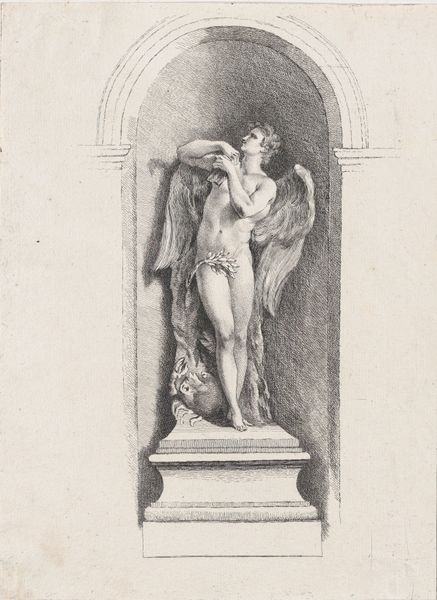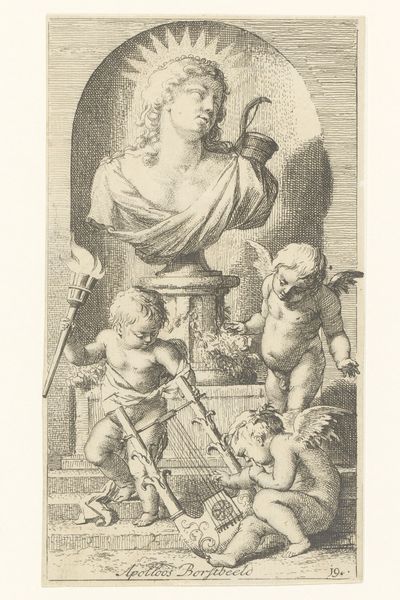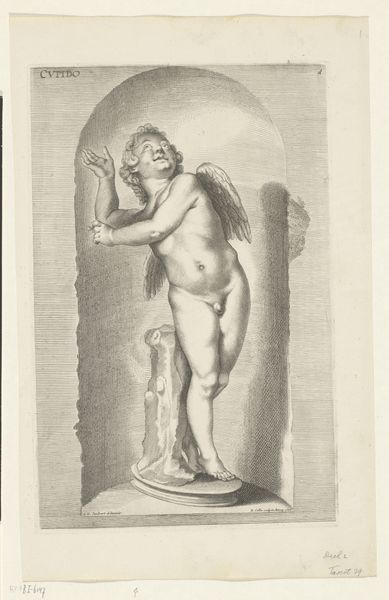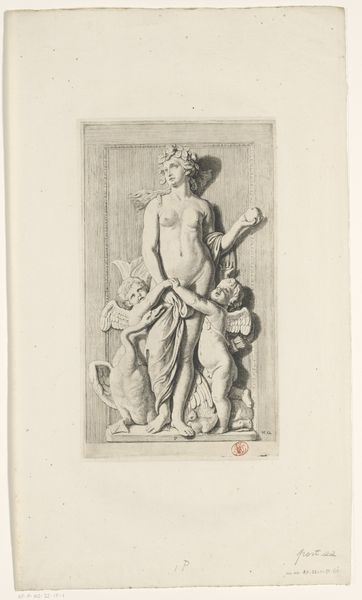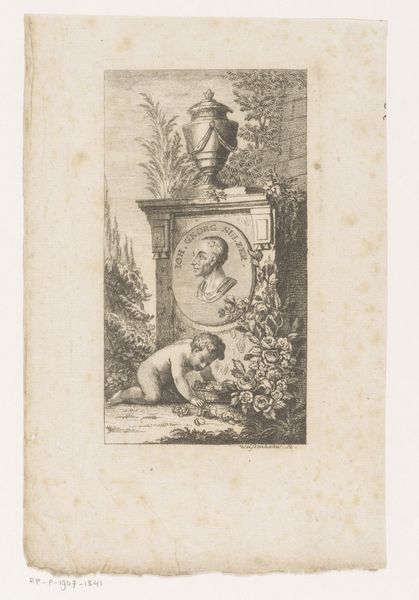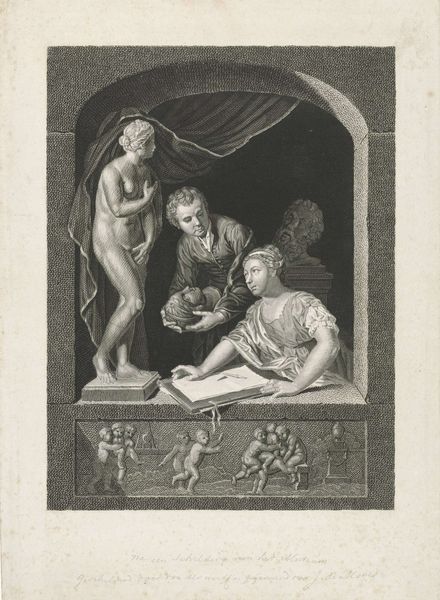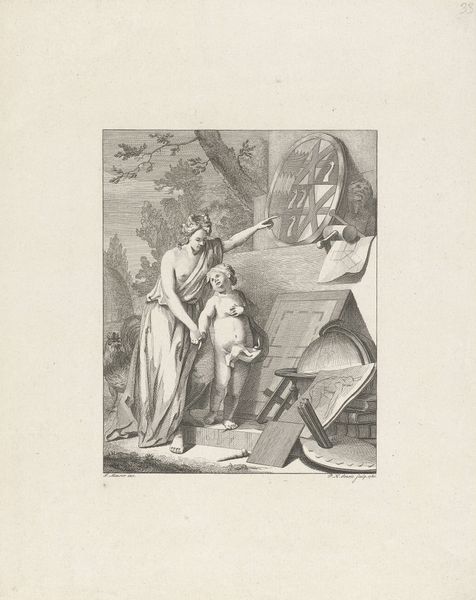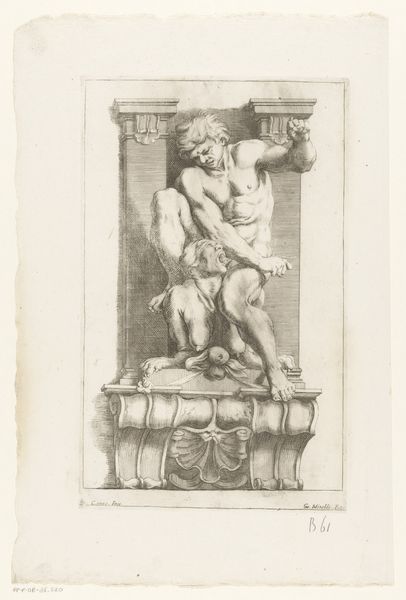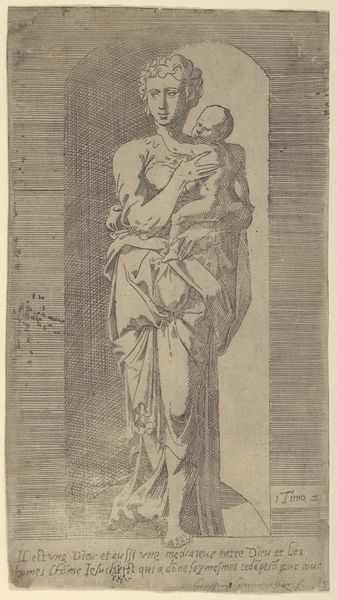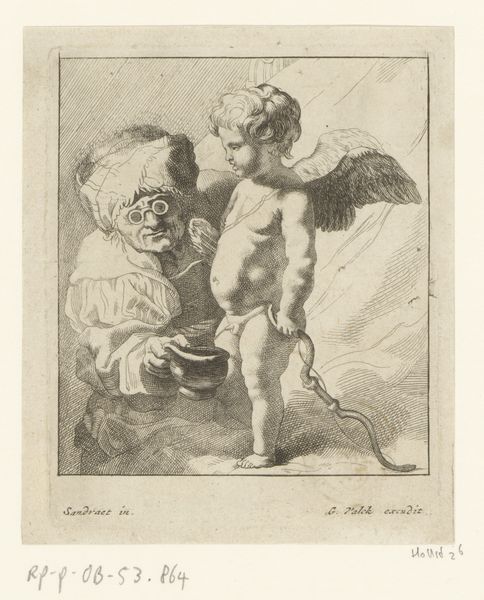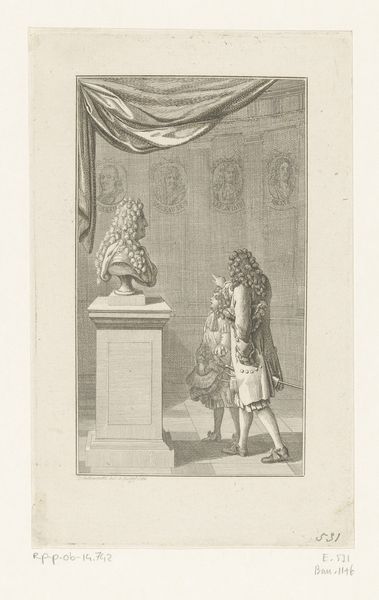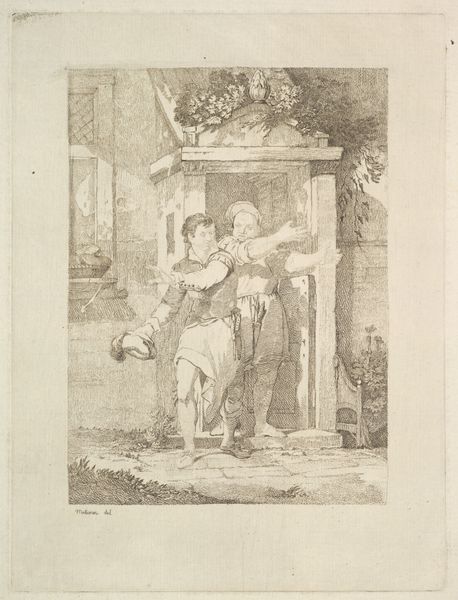
engraving
#
portrait
#
allegory
#
baroque
#
old engraving style
#
figuration
#
line
#
history-painting
#
academic-art
#
engraving
Dimensions: height 158 mm, width 103 mm
Copyright: Rijks Museum: Open Domain
Editor: Here we have Claude Mellan’s engraving, “Minerva, leaning on a pedestal,” from 1637, housed here at the Rijksmuseum. I am struck by the allegorical composition and all the surrounding objects... What do you see when you look at this engraving? Curator: Immediately, I consider the context of its creation. Seventeenth-century art, particularly allegorical prints like this, functioned as visual rhetoric. Minerva, the Roman goddess of wisdom and strategic warfare, wasn't just a mythological figure; she was a symbol, often invoked to legitimize power, commemorate events, or advocate for particular policies. Mellan's depiction needs to be situated within that framework of political imagery. Consider, who was the intended audience? And what message was Mellan trying to convey? Editor: That makes sense. I noticed Minerva has a rather thoughtful expression. Could her posture tell us more about what this piece is meant to convey? Curator: Absolutely. Notice the placement of the pedestal and its blank front. Also, the instruments of war at the goddess’ feet contrast with the cupid extending a wreath. Minerva appears pensive, perhaps suggesting the careful deliberation required before engaging in conflict, but this doesn’t discount the relevance of weapons in political stability and triumph. This image can act as an encouragement towards a political strategy of caution but determination, likely toward political issues of the period. What’s your understanding? Editor: It feels like a complex statement. She embodies war but also contemplation and maybe even peace. The presence of the Cupid further supports the peace idea. Curator: Indeed, a successful image! It demonstrates how art from this period wasn't just about aesthetics. These images served a public function; they shaped opinions and reinforced societal values. Editor: It is remarkable to think how engravings like this functioned within the 17th century and continue to carry significant political weight. Curator: Exactly, examining Minerva, leunend op een voetstuk" illuminates the political work an image performs across the centuries, how the function of art lives on, as a socio-political lens!
Comments
No comments
Be the first to comment and join the conversation on the ultimate creative platform.

